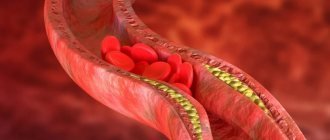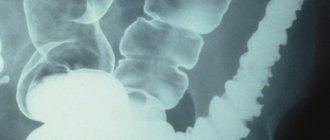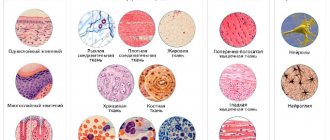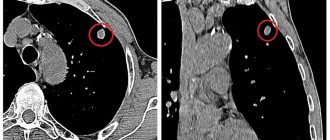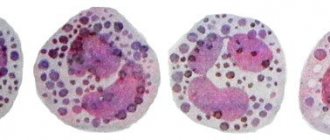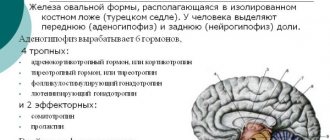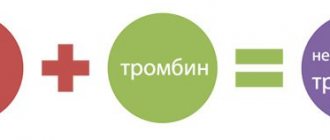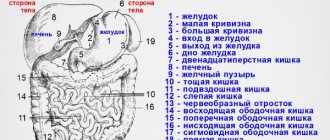How to remove radiation from your body after an x-ray? Every person is interested in this issue, since at least once a year, and sometimes more often, they are forced to be exposed to radiation. This happens not only with routine fluorography, but also with X-rays, computed tomography (CT), positron emission tomography, radiation therapy and some other medical procedures.
With a small dose, the harm to humans is minimal, and getting rid of the consequences of the procedure is not at all difficult. The body is able to cope with the resulting load on its own. Large portions lead to the development of radiation sickness, which is fraught with serious consequences, including death. This happens, for example, in the case of man-made accidents.
What is radiation?
The word “radiation” is translated from Latin as “emission of radiation.” In physics, this is the name for ionizing radiation, represented by a flow of ions - elementary or quantum. When irradiated, X-rays penetrate the body, forming free radicals, which subsequently lead to cell destruction.
With a small dose of exposure, the harm to the body is minimal, and it is not difficult to remove it. Most often, the body itself gradually gets rid of free radicals. But even a small portion can lead to negative consequences that are not noticed soon after exposure. When receiving a large dose of radiation, a person may experience radiation sickness, which in most cases is fatal. Such exposure occurs during man-made disasters.
Radioactive cloud from a nuclear explosion
When radioactive substances enter the atmosphere, they quickly spread to any area, and within a short time they can end up even in remote corners of the planet.
Alternative ways to combat the harmful effects of radiation
If you want to reduce your risks from radiation poisoning, here are some more simple tips to help you do this.
Let's try to figure out what removes radiation from the body:
- Tea mushroom. This product is especially effective when exposed to low dose radiation. It must be taken for two weeks before and after radiation.
- Pomegranate and grape juice. These fruits have excellent antioxidant effects.
- Anti-radiation tablets – “Polyphepan”. This product helps to effectively combat the negative effects of X-ray radiation. For adults, the daily dose of this drug is approximately 16 tablets. It is recommended to give children no more than 10 pieces. The drug is completely harmless. It can be taken even by small children and pregnant women.
Possible sources of radiation
With a detailed study of the environment, we can conclude that a person receives radiation from almost all objects. Even without living in a dangerous area with a high level of background radiation, he is constantly exposed to radiation.
Space and habitat
A person is exposed to the rays of the sun, which accounts for almost 60% of the annual dose of radioactive radiation. And people who spend a lot of time outside get it even more. Radionuclides are present in almost every area, and in some parts of the planet the radiation is significantly higher than normal. But for those living in the studied and verified area there is no danger. If necessary or if there are doubts about the state of the background radiation, you can invite the relevant services to check it.
Treatment and diagnosis
Cancer patients are at great risk from undergoing radiotherapy. Of course, doctors are trying to reduce the likelihood of damage to healthy organs and try to carry out this method only on the affected parts of the body, but still, the body suffers a lot after this procedure. CT and X-ray machines also emit radiation. This technique generates very small doses, which is no cause for concern.
Technical equipment
Old domestic televisions and monitors with ray tubes. This technique is also a source of radiation, weak, but radiation still occurs. Modern equipment does not pose a danger to living beings. Mobile phones and other similar equipment are not radiation sources.
It turns out that almost everything that surrounds us to one degree or another has its own radiation background
X-ray: how to protect yourself
X-ray radiation during diagnostics can penetrate organs and tissues, thereby causing harm. Every person has probably experienced the influence of an X-ray machine at least once in his life. It is worth considering that in this case there are no significant reasons for concern. The device operates with weak rays. Plus, the effect of the equipment is short-lived. If radiation occurs irregularly, then the body is quite capable of coping with such a dose on its own. In this case, the probability of damage will be approximately 0.001%. How to remove radiation from the body after an x-ray? Any of the above methods works well here too.
What happens in the body when exposed to a high dose of radiation?
The ability of radiation rays to penetrate the tissues of the human body poses certain risks to the health of the body. When they enter cells, they destroy molecules that break down into positive and negative ions. Many scientific studies have been conducted confirming the negative effect of radiation on the structure of molecules of living organisms.
Is x-ray dangerous for a child?
The harm from radiation is:
- in violation of the protective activity of the immune system;
- destruction of cells and tissues of the body;
- modification of the structure of epithelial and stem cells;
- decreased metabolic rate;
- changes in the structure of red blood cells.
Disturbances in the body after irradiation can cause the development of serious diseases - oncological, endocrinological and reproductive diseases. Depending on the power of the radiation and the distance at which the person exposed to the radiation field was located, the consequences can take a variety of forms. With intense radiation, a large amount of toxins are formed in the body, causing radiation sickness.
Signs of radiation sickness:
- disruption of the gastrointestinal tract, vomiting, nausea;
- apathy, lethargy, weakness, loss of strength;
- persistent dry cough;
- disruption of the functions of the heart and other organs.
Very often, radiation sickness leads to the death of the patient.
Damage due to different degrees of radiation sickness
A vitally important point in providing assistance during exposure to a high dose of radiation is its removal from the victim’s body.
Side effects of radiation therapy
How to remove radiation from the body after exposure? To answer this question, you first need to understand the classification of negative consequences. Early symptoms of radiation therapy include dizziness and nausea. They can be easily stopped with the help of special medications. Late symptoms include diseases of vital organs such as the liver, lungs and heart. Moreover, the disease in this case can take a chronic form. It is unlikely that you will be able to completely protect yourself from radiation. However, it is still possible to reduce the impact.
First aid for radiation exposure
If, under certain circumstances, a person has received a large dose of radiation, the following measures should be taken to eliminate its negative effects. All clothing should be removed and disposed of quickly. If this is not possible, then thoroughly remove the dust. The person who has received radiation needs to immediately take a shower using detergents.
And then work on removing radiation with the help of medications. These measures are intended to rid the body of high doses of radioactive substances - to remove radiation after an X-ray, due to its insignificant impact, such methods are not carried out.
Does alcohol protect against radiation?
In recent decades, the radioactive smog enveloping our planet has become increasingly intense.
Humanity is faced with the question of creating protectors—substances that protect the body from the effects of radionuclides and can accelerate their removal from the body. A myth arises about the radioprotective properties of alcohol. Or maybe this is not a myth at all? Let's discuss information about the effect of various types of alcoholic beverages on radiation damage to the human body.
The birth of the myth about the benefits of alcohol against radiation
The creation of nuclear weapons and the results of their testing initiated orders from the military ministries in the fifties of the 20th century to find means of anti-radiation protection (radioprotectors).
They were supposed to create in the irradiated organisms a state of increased resistance to the effects of ionizing radiation.
They were supposed to be taken before the explosion of a nuclear charge or before entering a zone of radioactive contamination.
Research was carried out very intensively, but their results were ambiguous. Among the chemicals studied was alcohol, which is known to dull perception and suppress the instinct of self-preservation.
And no matter how blasphemous it sounds, it allows you to complete a combat mission before the soldier gets radiation sickness.
The soldiers were actually drugged with vodka or simply diluted alcohol, sent to a hot spot, and then straight to the hospital.
Does vodka remove radiation from the body?
We are interested in two aspects of this problem.
- Does alcohol protect against radiation?
- Do alcoholic drinks contribute to the accelerated removal of radionuclides from the body?
Let's turn to its first part. Strong alcoholic drinks are derivatives of ethyl alcohol of varying concentrations, with various additives and different manufacturing technologies. Alcohol is a solvent. Once in the body of an irradiated person, alcohol dissolves and evenly distributes radionuclides throughout the bloodstream. Initially they accumulate:
- in the lymph nodes;
- thyroid gland;
- lungs;
- in the spinal and bone marrow.
This redistribution leads to the fact that previously uninfected organs are affected.
The “carriers” of radiation sickness are oxygen molecules, which play the role of transport for various substances. Yes, alcohol slows down this process, delaying the movement of oxygen molecules between the internal organs of a person.
But this effect is achieved only with critical doses of radiation and astronomical doses of alcohol taken.
This statement is not controversial - the mechanism of action of shock doses of alcohol to eliminate the effects of strong ionizing radiation has not been fully studied.
In all other cases, alcohol and radiation are incompatible. Alcohol only worsens the effects of radiation, since the hypoxia it causes (lack of oxygen in the body) leads to a decrease in immune strength.
As for the question - does vodka or other strong alcoholic drinks remove radiation from the body, the answer of scientists is categorical - alcohol is not included in the list of products that contribute to this process.
The popular opinion about whether vodka helps against radiation has no basis. This “half-knowledge” of the problem led to the birth of misconceptions among some people, and for some it served as a justification for their addiction to the “green serpent.”
Red wine and radiation
The art of wine treatment (enotherapy) has been known since ancient times. In general, in Soviet times the official attitude towards this product was extremely negative.
But in the 70–80s of the last century, natural red wines were introduced into the diet of crews of nuclear submarines and personnel servicing radioactive installations. The Chernobyl tragedy forced hypocrisy and propaganda to retreat in the fight for a “sober lifestyle.”
Literally the next day after the accident, huge reserves of dry red wine were delivered to Kyiv.
What do we owe to this drink, and does red wine help against radiation? Studies of its chemical composition and effects on the human body show that natural red wine:
- strengthens the immune system;
- increases the body's resistance to viral, electromagnetic and radiation effects;
- due to the content of pectins and vitamins, it accelerates the removal of radionuclides (albeit to a very small extent);
- contains a natural antioxidant that protects against the effects of radiation, and thanks to the presence of resveratrol, it is able to prevent some of the damage caused by it;
- Due to the presence of rubidium in it, it accelerates the removal of radioactive cesium from the body.
It is necessary to clarify the positive “relationship” between red wine and radiation listed above. The main positive effect is achieved precisely due to the powerful oxidative properties of this product. By suppressing the action of free radicals, this product inhibits oxidative processes triggered by radiation.
The recommended dose is 100–150 ml per day, that is, one glass. Large doses do not enhance the positive effect, but act like a banal drink.
Beer and radiation
There is one more alcoholic drink left behind in our wanderings through the labyrinths of the Internet - beer.
The authors of publications about the protective properties of a foamy drink from radiation refer to the fact that beer promotes the release of fluid from the body, along with which waste products, including radionuclides, are released. This is nothing more than idle speculation, not confirmed by any research.
And, in general, none of the types of alcoholic beverages have almost any radioprotective properties.
The most effective radioprotectors created in laboratories are characterized by a special coefficient, the value of which approaches 2.
The radioprotective properties of alcoholic beverages are 2 times weaker and act for a very limited time, and only with acute irradiation received in seconds and minutes.
Radiation can be removed only by preparations of stable isotopes, which displace radioactive “brethren”, as well as products containing pectin:
- beet;
- apples;
- black currant;
- plums
In all situations involving longer exposure, alcohol is powerless against radiation poisoning of the body and one should resort to other methods of protection against radiation.
Source: https://otravleniya.net/izluchenie/radiatsiya-i-alkogol.html
Are x-rays harmful?
Radiation research has long become an indispensable necessity for the rapid detection of many diseases dangerous to human health and life. Radiology is successfully used to create images of various parts of the bone skeleton and internal organs - fluorography, computed tomography, angiography and other studies. With this diagnosis, minor x-ray exposure occurs, but its consequences still frighten patients.
Indeed, when taking images, a small dose is used, which is unable to lead to changes in the body. Even when undergoing several similar procedures in a row, the patient is exposed to no more radiation than in normal life over a certain period of time. The comparison of ratios is discussed in the table.
| Type of procedure | Radiation dose | The time it takes for a person to receive similar exposure in nature |
| X-ray (X-ray) of the chest | 0.1 mSv | 10 days |
| Fluorography (FLG) of the chest | 0.3 mSv | 30 days |
| Mammography | 0.7 mSv | 3 months |
| Computed tomography (CT) of the whole body | 10 mSv | 3 years |
| CT scan of the abdomen and pelvis | 10 mSv | 3 years |
| CT head | 2 mSv | 8 months |
The table shows that a simple x-ray is produced in a small dose, the same as a person receives in a week and a half. And more serious examinations, requiring the use of higher doses, are prescribed in fully justified situations, when the choice of treatment, as well as the patient’s condition, depends on the results of the examination. The factor on which the consequences of exposure to x-rays depend is not the fact of exposure itself, but its duration.
After a single diagnosis using X-rays, using a low dose of radiation - RO or FLG, no special measures should be taken, since it will gradually leave the body in a short time. But when undergoing several studies in a row using large doses, it is better to think about ways to remove radiation.
Smoking as an additional source of radiation
Doses of dangerous radiation exposure
To prevent the occurrence of consequences that result from radiation, it is necessary to constantly monitor the background radiation and its level at work, in residential premises, in food and water. In order to assess the degree of possible damage to living organisms and the impact of radiation exposure on people, the following quantities are used:
- exposure dose. Exposure to ionizing gamma and x-ray radiation in the air. It has the designation kl/kg (pendant divided by kilogram);
- absorbed dose. The degree of influence of radiation on the physical and chemical properties of a substance. The value is expressed in a unit of measurement - gray (Gy). In this case, 1 C/kg = 3876 R;
- equivalent, biological dose. The penetrating effect on living organisms is measured in sieverts (Sv). 1 Sv = 100 rem = 100 R, 1 rem = 0.01 Sv;
- effective dose. The level of radiation damage, taking into account radiosensitivity, is determined using sievert (Sv) or rem (rem);
- group dose. Collective, total unit in Sv, rem.
Using these conditional indicators, you can easily determine the level and degree of danger to human health and life, select the appropriate treatment for radiation exposure and restore the functions of the body affected by radiation.
How to remove radiation from the body?
In order to help the human body get rid of radiation after research or after exposure to radiation under unforeseen circumstances, there are several ways. For different degrees of irradiation, one or several methods can be used in a complex.
Method using medicinal substances and dietary supplements
There are many medications that can help the body cope with radiation:
- Graphene is a special form of carbon created by scientists that provides rapid removal of radionuclides.
- Activated carbon – eliminates radiation exposure. It must be taken crushed and mixed with water before meals every 15 minutes, 2 tbsp. l., which ultimately equals the consumed volume of 400 ml.
- Polypephane – helps the body overcome the effects of x-rays. It has absolutely no contraindications and is approved for use by children and pregnant women.
- Potassium orotate – prevents the concentration of radioactive cesium, providing reliable protection for the thyroid gland and the body as a whole.
- Dimethyl sulfide – provides reliable protection of cells and DNA with its antioxidant properties.
Activated carbon is a simple and affordable means of removing radiation
And dietary supplements:
- Iodine - dietary supplements containing its atoms, successfully eliminate the negative effects of the radioactive isotope accumulating in the thyroid gland.
- Clays with zeolites bind and remove radiation waste from the human body.
- Calcium - dietary supplements containing it in their composition eliminate radioactive strontium by 90%.
In addition to medications and dietary supplements, you can focus on proper nutrition to speed up the process of removing radiation. To reduce the level of X-ray exposure, it is recommended to undergo diagnostics in modern clinics, the equipment of which requires a lower dose to obtain images.
Nutrition that promotes the removal of radiation
If desired, after a single X-ray examination, preventive measures can be taken to facilitate the removal of a small dose. To do this, after visiting a medical facility, you can drink a glass of milk - it perfectly removes small doses. Or drink a glass of dry wine. Grape wine perfectly neutralizes radiation.
Grape juice with pulp is considered a worthy substitute for wine, but any will do if there is no alternative. You can eat iodine-containing foods - fish, seafood, persimmon and others. In order to eliminate radiation during frequent x-ray diagnostics, you should adhere to the following nutritional principles and introduce iodine-containing foods, fermented milk products, foods rich in fiber and potassium into your diet.
Actively used for frequent x-rays:
- cold pressed vegetable oil;
- naturally created yeast;
- juices, decoctions of prunes, dried apricots and other dried fruits or herbs;
- quail eggs;
- honey and bee pollen;
- prunes, rice, beets, oatmeal, pears.
It is recommended to drink plenty of fluids and focus on the first courses - this will contribute to a speedy cleansing. Products containing:
- Selenium is a natural antioxidant that protects cells and reduces the risk of cancer. There is a lot of it in legumes, rice, eggs.
- Methionine – promotes cell restoration. Its highest content is in sea fish, quail eggs, and asparagus.
- Carotene – restores cell structure. Found in abundance in carrots, tomatoes, apricots, and sea buckthorn.
Seafood helps eliminate radiation
When receiving a high dose of training, it is necessary to reduce the amount of food consumed. This will make it easier for the body to fight and remove harmful substances.
What foods should you not eat during radiation?
It is worth saying that on many modern forums and websites dedicated to saving from radiation poisoning, a person ignorant of radiation issues can find a lot of erroneous facts and information about food products that supposedly remove ionizing substances and help to escape. With an increased background radiation, a person should exclude the following foods from their diet:
- Honey products, honeycombs and pollen.
- Beets, wine or other products that help increase hemoglobin levels and eliminate anemia and anemia due to radiation.
- Cold-pressed vegetable oils, olives and other plant products that improve metabolism.
- Yeast and related fermentation products that supposedly strengthen the thyroid gland and help it resist radioactive attack.
- Fiber-rich foods such as porridge, oatmeal, and baked goods.
It should be noted that ionizing substances and radioactive elements are easily and quickly eliminated by the body only through the pores or natural bowel movements, therefore a person who is exposed to a radioactive attack should take water treatments as often as possible, eat foods and drinks that help restore regular bowel movements, and also promote more frequent urination and sweating.
Based on the results of many scientific studies and experiments, it became clear that a person can extremely quickly and successfully remove radioactive elements from the body and escape from charged ions by following a strict diet, as well as through periodic fasting and constant cleansing procedures.
Does strong alcohol help remove radiation?
There is a lot of debate about the benefits of vodka during radiation exposure. This is fundamentally wrong. Vodka, instead of removing harmful radioactive substances, promotes their distribution in the body.
If you use alcohol to neutralize radiation, then only dry red grape wine. And then in certain quantities. Vigilance above all!
Of course, there is no need to be afraid of an x-ray, since if you refuse to take it, the doctor may miss a serious illness, which can subsequently lead to dire consequences. It is enough just to treat the body with care and take all measures to eliminate the consequences of radiation exposure after an x-ray.
Signs of radiation exposure
The damaging ability of invisible ionizing radiation is associated with the impact on humans of alpha, beta and gamma particles, x-rays and protons. Due to the latent, intermediate stage of radiation exposure, it is not always possible to determine in time the moment of onset of radiation sickness. Symptoms of radioactive poisoning appear gradually:
- radiation injury. The effect of radiation is short-term, the radiation dose does not exceed 1 Gy;
- typical bone marrow form. Irradiation rate - 1-6 Gy. Death from radiation occurs in 50% of people. In the first minutes, malaise, low blood pressure, and vomiting are observed. Replaced by visible improvement after 3 days. Lasts up to 1 month. After 3-4 weeks the condition worsens sharply;
- gastrointestinal stage. The degree of irradiation reaches 10-20 Gy. Complications in the form of sepsis, enteritis;
- vascular phase. Poor circulation, changes in blood flow speed and vascular structure. Blood pressure surges. The dose of radiation received is 20-80 Gy;
- cerebral form. Severe radiation poisoning at a dose of more than 80 Gy causes cerebral edema and death. The patient dies from 1 to 3 days from the moment of infection.
The most common forms of radioactive poisoning are bone marrow and gastrointestinal damage, the consequences of which are severe changes in the body. Characteristic symptoms also appear after exposure to radiation:
- body temperature from 37 °C to 38 °C, in severe form the indicators are higher;
- arterial hypotension. The source of low blood pressure is a violation of vascular tone and heart function;
- radiation dermatitis or hyperemia. Skin lesions. Expressed by redness and allergic rash;
- diarrhea. Frequent loose or watery stools;
- baldness. Hair loss is a characteristic symptom of radiation exposure;
- anemia. Lack of hemoglobin in the blood is associated with a decrease in red blood cells, oxygen cellular starvation;
- hepatitis or cirrhosis of the liver. Destruction of the gland structure and changes in the functions of the biliary system;
- stomatitis. The reaction of the immune system to the appearance of foreign bodies in the body in the form of damage to the oral mucosa;
- cataract. Partial or complete loss of vision is associated with clouding of the lens;
- leukemia. Malignant disease of the hematopoietic system, blood cancer;
- agranulocytosis. Decreased leukocyte levels.
Exhaustion of the body also affects the central nervous system. Most patients experience asthenia or pathological fatigue syndrome after radiation injury. Accompanied by sleep disturbances, confusion, emotional instability and neuroses.
